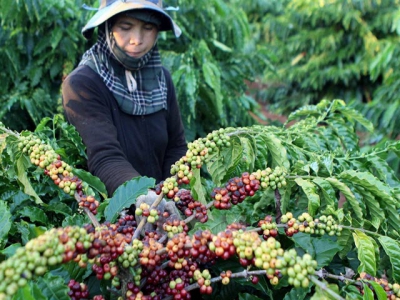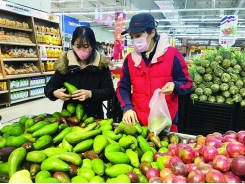Farm exports to EU face name recognition, standards challenges

The protection offered by the European Union to 39 unique Vietnamese products under a newly activated trade pact opens the door to Vietnam’s agricultural produce. However, to take advantage of this protection under the EU-Vietnam Free Trade Agreement (EVFTA), Vietnamese businesses must adhere to the world’s most stringent quality standards.
EU standards put pressure on Vietnam’s agricultural sector to change production methods
Strict standards
According to Dao The Anh, Deputy Director of the Vietnam Academy of Agricultural Sciences, the successful entrance of protected geographic indicators (GIs) into foreign markets depends on consumer tastes of the import market. Exported products must first meet the regulations, standards, origin traceability and other requirements of importing countries.
“Building, developing and marketing are three factors for Vietnamese protected GIs to penetrate deeper into this market,” Dao The Anh said.
Le Ngoc Lam, Deputy Director General of the National Office of Intellectual Property of Vietnam under the Ministry of Science and Technology, said EU regulations and requirements are very strict, especially regarding commodities affecting human health like food. The EU requires agricultural exports to the market to have GlobalGap and HACCP certificates.
Specifically, the GlobalGAP standards require producers to set up an inspection and monitoring system from cultivation to harvesting and processing. They also mention other criteria such as worker welfare and environmental protection.
As Vietnam’s agricultural exports to the EU follow a post-check mechanism, products failing to meet required standards will be returned or destroyed on the spot, at the expense of the exporter. This means that both producers and businesses will suffer losses if they do not control the quality of agricultural exports right from the production stage and in the long run this will reduce the value of GIs.
Changing production methods
Luong Hoang Thai, Director General of the Multilateral Trade Policy Department under the Ministry of Industry and Trade (MoIT), said that in fact, the EU’s GIs in the EVFTA like Bordeaux wine (France), Mozzarella cheese (Italy) and others are well-known brands globally. Meanwhile, typical Vietnamese GIs such as Hai Hau Rice or Tan Cuong Tea are only known in Vietnam.
Thai said that taking advantage of the digital transformation process, especially social media trends would improve the familiarity of EU consumers with these GIs.
EU standards are also a challenging technical barrier for Vietnamese agricultural products, but they create positive pressure to shift production methods from a focus on quantity to quality.
Cambodia has only two products with GIs, pepper and palmyra, but they have exploited them well by focusing on quality, or on a small volume for export. Currently, Cambodian pepper sells for US$425 per kg, while Vietnam’s only fetches US$8 per kg. Many famous chefs in the world also use Cambodian pepper for ice cream thanks to its specific flavors.
In France, the strict and standardized GI management system also contributes to the reputation of its protected products. Currently, France has 561 names of origin and 80 GIs with annual sales up to nearly EUR30 billion, accounting for 15 percent of its food industry revenues.
The MoIT said that to overcome EU’s technical barriers, Vietnam needs to establish a national quality inspection system when considering and recognizing GI protection, based on the experience of EU countries.
To manage effectively a registered and protected GI and facilitate access to the EU market, businesses, associations and local authorities must coordinate closely to protect the product quality together and improve their role and capability in building supply-demand chains for protected GIs.
EVFTA is a lever for economic growth, which would expand the exports of Vietnamese agricultural products to the EU market that has a GDP of US$18 trillion. The protected GIs will contribute to enhancing Vietnam’s national image and improving the international community’s awareness of traditional Vietnamese products.
Related news
Tools

Phối trộn thức ăn chăn nuôi

Pha dung dịch thủy canh

Định mức cho tôm ăn

Phối trộn phân bón NPK

Xác định tỷ lệ tôm sống

Chuyển đổi đơn vị phân bón

Xác định công suất sục khí

Chuyển đổi đơn vị tôm

Tính diện tích nhà kính

Tính thể tích ao



 Growing demand for Vietnamese rice in Africa
Growing demand for Vietnamese rice in Africa  Vietnamese agricultural products struggle to enter supermarkets
Vietnamese agricultural products struggle to enter supermarkets